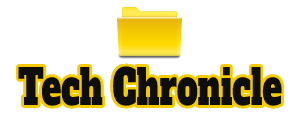In today’s fast-paced digital world, the ability to convert Handwritten into text is more than a convenience—it’s a revolution in how we handle information. Whether you’re a student, professional, or anyone in between, the transition from pen and paper to digital files can significantly enhance productivity and accessibility. Here’s a comprehensive look at how this technology is transforming our approach to handwritten documents, focusing on its efficacy in converting handwriting to text, and even to PDF.
1. Understanding Handwriting to Text Conversion
The process of converting handwritten documents to text involves optical character recognition (OCR) technology. This advanced tool scans handwritten pages and interprets the shapes and lines of each character to convert them into editable text. This technology caters to various needs, from digitizing old notebooks to making quick edits to handwritten drafts.
2. Benefits of Handwriting to Text Tools
One of the key benefits of Handwriting to text conversion is its ability to save time. Imagine the hours it would take to manually type out notes from numerous lectures or meetings. With OCR technology, those hours are reduced to minutes. Additionally, converting your handwritten notes into digital text makes the information easily searchable and sortable, thus enhancing data management and retrieval.
3. From Handwritten Notes to PDFs
Taking digital transformation a step further, many handwriting to text converters also offer the functionality to convert your newly digital text directly into PDF format. This is particularly beneficial for maintaining the layout and structure of the original document while ensuring that it can be shared and viewed on any device, preserving the document’s integrity and appearance.
4. Top Tools for Handwriting to Text Conversion
Several tools have emerged as leaders in this technology, offering robust features that cater to diverse needs. Some popular options include:
- Notability and GoodNotes: Ideal for students and professionals alike, these apps not only Convert handwriting to text but also offer note-taking features that integrate multimedia and sketching tools.
- Microsoft OneNote: Known for its seamless integration with other Office apps, OneNote allows users to convert handwritten notes into digital text effortlessly.
- Evernote: With its ability to sync across devices, Evernote transforms your handwritten notes into text and organizes them into searchable, manageable digital notebooks.
5. Accuracy and Language Support
The accuracy of handwriting to text conversion has significantly improved with advancements in AI and machine learning. Modern OCR tools can recognize a wide array of handwriting styles with high accuracy, reducing the need for manual corrections. Additionally, these tools support multiple languages, which is indispensable in our globalized world.
6. Use Cases in Professional and Academic Fields
The practical applications of converting handwriting to text are vast:
- In academia, students can digitize notes for easy sharing and collaboration.
- In business, professionals can convert meeting notes into digital formats for easy dissemination among stakeholders.
- In research, scientists and researchers can digitize lab notes to preserve and share their findings more effectively.
7. Looking Forward: The Future of Handwritten Note Conversion
As technology continues to evolve, we can anticipate even more sophisticated OCR solutions, with enhanced accuracy and features that could include real-time conversion during meetings or lectures. The integration of AI could also personalize the recognition process, adapting to individual handwriting quirks for even more precise conversions.
In conclusion, converting handwritten notes to text is not just about embracing digital documents—it’s about unlocking the full potential of your information. Whether it’s through enhanced accessibility, improved collaboration, or streamlined data management, the digital transcription of handwritten notes is a cornerstone of modern productivity tools.
